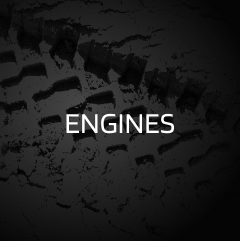 CCA Spares
CCA Spares
Valves in Engines – Managing the Flow of Power
Continuing our journey through the intricate components of internal combustion engines, we turn our attention to a small yet mighty component that plays a crucial role in managing the flow of power: valves. Explore the intricacies of valves within an engine, understanding their functions, types, and their impact on overall engine efficiency.
Valves and Their Functions:
Valves are fundamental to the combustion process, controlling the intake of air and fuel and the expulsion of exhaust gases. Delve into the dual roles of intake valves, which allow the entry of the air-fuel mixture into the combustion chamber, and exhaust valves, responsible for releasing the spent gases after combustion.
Timing, Lift, and Duration:
The operation of valves is intricately tied to the engine’s timing, lift, and duration. Understand how the camshaft, connected to the crankshaft, dictates the precise moments when valves open and close. Explore the significance of valve lift, the distance the valve moves off its seat, and how duration, the time the valve is open, influences engine performance.
Overhead Valve (OHV) vs. Overhead Camshaft (OHC):
Engines employ different configurations for valve placement, with overhead valve (OHV) and overhead camshaft (OHC) designs being common. Explore the distinctions between these configurations, understanding how they impact valvetrain complexity, performance, and overall engine design.
Variable Valve Timing (VVT):
Variable Valve Timing (VVT) is a technological advancement that enhances engine flexibility. Learn how VVT systems adjust the timing of valve operation based on driving conditions, optimizing efficiency, and power delivery. Understand the benefits of improved fuel efficiency and reduced emissions associated with VVT.
Valvetrain Components:
The valvetrain comprises various components, including valves, springs, lifters, and pushrods or cam followers. Explore how these elements work in harmony to translate the motion of the camshaft into precise valve movement. Understand the significance of valve springs in ensuring proper valve closure and preventing valve float at high engine speeds.
Materials and Design Considerations:
Valves operate in a challenging environment of high temperatures and mechanical stress. Delve into the materials commonly used for valve construction, such as stainless steel or alloys, and understand the design considerations that contribute to durability, heat resistance, and efficient performance.
Performance Valves:
For enthusiasts seeking enhanced engine performance, aftermarket performance valves are available. Explore the characteristics of performance valves, including larger diameters and lightweight materials, and understand how they contribute to increased airflow and power output.
Valve Seals and Guides:
Valve seals and guides play a role in maintaining proper lubrication and preventing oil from entering the combustion chamber. Learn about the materials used for seals and guides and their significance in ensuring the longevity of valves and the valvetrain.
In conclusion, valves are unsung heroes within the engine, orchestrating the precise entry and exit of gases to unleash power. This article has provided a comprehensive exploration of their functions, types, and impact on engine efficiency. Stay tuned for the next installment as we continue our journey through the intricate components of internal combustion engines.

